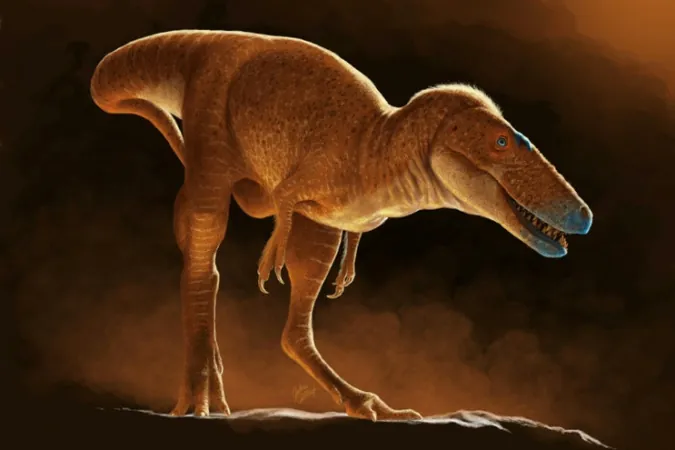
Unlocking the Secrets of Tiktaalik: The Fish That Took the First Steps on Land
2025-04-30
Author: Sarah
A Glimpse Into Evolution: Meet Tiktaalik
Imagine the world 375 million years ago—shallow streams and tidal flats bustling with peculiar creatures. Among these was Tiktaalik roseae, a fish-like pioneer on the brink of adapting to life on land. With a unique blend of fins and limb-like features, Tiktaalik had a flat head designed for peering above the water's surface.
Fossil Discoveries Redefine Understanding
Recently, scientists have utilized advanced microcomputed tomography scans on Tiktaalik’s well-preserved fossils, revealing groundbreaking insights into its skeletal structure. Surprisingly, the evolutionary transition from swimming to walking began within its backbone and ribs long before true legs made an appearance.
Tiktaalik: A Revolutionary Fossil
Tom Stewart and his team at Penn State manipulated the micro-CT scanner to peel away layers of rock, uncovering hidden bones that were previously unknown. These scans allowed for a complete skeleton reconstruction, crucial for understanding how this ancient creature navigated its environment.
The Structure of Change: Ribs and Vertebrae
Most fish have uniform ribs and vertebrae, but Tiktaalik deviates from this norm. Its spine reveals specialized sections, indicating a vital evolutionary step. The robust rear ribs likely connected to a pelvis via ligaments, showcasing an early version of the bony structure that supports walking in tetrapods.
Bracing for Land: The Pelvic Connection
While Tiktaalik may not have walked on land as we know it, it did possess a well-developed pelvis aligned with reinforced ribs. This combination facilitated an innovative method of propelling itself off the streambed, paving the way for the evolution of actual limbs.
High-Tech Imaging Unveils Ancient Bones
Using non-destructive micro-CT imaging, researchers captured astonishing details of Tiktaalik's skeleton, revealing its potential for movement in a long-lost landscape. This technology allowed for insights that manual tools might have overlooked, making it a game-changer for paleontology.
Connections to Future Evolutions
Tiktaalik provides a crucial link to later Devonian fossils, like Acanthostega and Ichthyostega, which had limbs but were still aquatic. By positioning Tiktaalik just before these ancestors in the evolutionary timeline, scientists illustrate how foundational elements of land travel were developing while fins remained dominant.
The Importance of Incremental Evolution
Understanding Tiktaalik's sturdy ribs and ambitious pelvis sheds light on the gradual innovations that led to terrestrial existence. Each minor adjustment—from more robust ribs to a flexible skull—hinted at how nature solved the gravity puzzle, bringing our ancient kin closer to solid ground.
The Impact of This Study
The implications of this research go beyond paleontology; it may also inspire fields like robotics, where ancient anatomical designs could inform modern technology. Tiktaalik serves as a reminder that the journey of evolution is often composed of subtle shifts rather than giant leaps, tying our narratives to those of life forms long extinct.
Stay Informed!
Curious to learn more about our planet's fascinating history? Subscribe to our newsletter for the latest updates and engaging articles!


 Brasil (PT)
Brasil (PT)
 Canada (EN)
Canada (EN)
 Chile (ES)
Chile (ES)
 Česko (CS)
Česko (CS)
 대한민국 (KO)
대한민국 (KO)
 España (ES)
España (ES)
 France (FR)
France (FR)
 Hong Kong (EN)
Hong Kong (EN)
 Italia (IT)
Italia (IT)
 日本 (JA)
日本 (JA)
 Magyarország (HU)
Magyarország (HU)
 Norge (NO)
Norge (NO)
 Polska (PL)
Polska (PL)
 Schweiz (DE)
Schweiz (DE)
 Singapore (EN)
Singapore (EN)
 Sverige (SV)
Sverige (SV)
 Suomi (FI)
Suomi (FI)
 Türkiye (TR)
Türkiye (TR)
 الإمارات العربية المتحدة (AR)
الإمارات العربية المتحدة (AR)